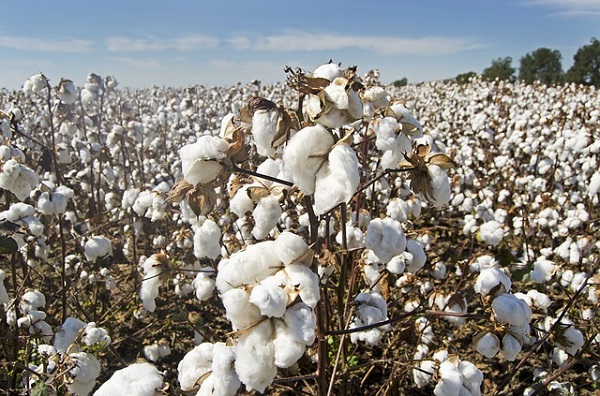
Even the earliest settlers in Georgia grew cotton, usually in small patches. Cotton was harvested by hand, separated from the seed by hand, and then hand spun for domestic use. Because it was so labor-intensive, nobody really thought of it as a cash crop.
That would begin changing with the invention of the cotton gin in 1793 by Eli Whitney, Jr., while he was a guest at the Mulberry Plantation near Savannah, Georgia. With the cotton gin, a person could separate up to 55 pounds per day instead of only 1 pound when doing it by hand. A further boost for cotton occurred with textile mills that began around the same time. By the 1850s, over a third of Georgia’s cropland was used for growing cotton. Even until the 1920s, cotton accounted for more than half of the total value of Georgia’s agricultural production. That began changing in Georgia with the arrival of the boll weevil in 1915. By 1921, the entire state was infested. Crop yield dropped from roughly 252 pounds/acre down to 106 pounds/acre.
The effect on Henry County was even worse. In 1919, Henry County farmers had over 63,000 acres planted in cotton, representing over 58% of the improved farmland. It was a very prosperous year for the farmers, and that prosperity trickled down to everyone else. But that all came crashing down in 1920 when the boll weevil caused an almost complete loss of the cotton crop. Many farms and businesses were foreclosed on. Five of the six banks were closed. This was known as the Boll Weevil Depression.
That didn’t stop Georgia farmers from growing it, though. In the February 18, 1921 edition of The Henry County Weekly, the Dutchtown column contained the following statement: ‘It’s almost time to begin to feed the boll weevil again.’ Then the Dutchtown column in the April 8, 1921 edition began with ‘Everybody planting cotton.’ We have a history of being tenacious or perhaps just downright stubborn.
Even when my parents were growing up in the 40s and 50s, they had to work in the cotton fields. Early in the season, there was ‘chopping’ cotton, which was the process of hoeing out the weeds and thinning the cotton plants for maximum production. Then at the end of the season, the cotton was picked by hand. By the time I came around in the 60s, most farmers had moved away from cotton. In the 60s, the farmland where my house now sits was planted in wheat. In the 70s, it was soybeans. From the 80s onward, land had more value as residential property.